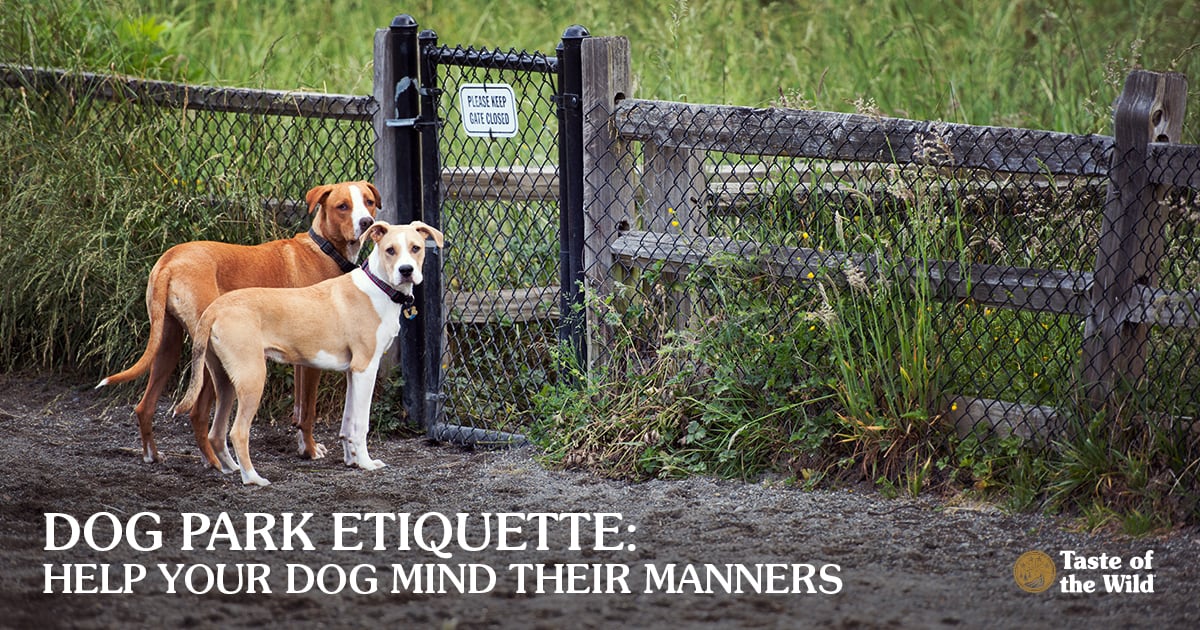
Does your dog want to romp in the Pacific? Check out Huntington Beach Dog Park in California. Are giant fire hydrants more their style? Visit Fort Woof Dog Park in Fort Worth, Texas. There’s a tennis ball tree —every retriever’s dream — at Beau’s Dream Dog Park in Lancaster, Pennsylvania. With 731 off-leash dog parks in the United States, there’s plenty to keep any dog entertained no matter where they hang their collar.
These doggy amusement parks are great places for your pup to exercise their body and mind while honing social skills. But there’s no guarantee that other dogs will be on their best behavior. Here are some tips to help keep your dog, and others, safe.
Before You Go
- Make sure vaccinations and parasite control are current. At the park, your dog can pick up contagious diseases such as parvovirus, canine influenza and kennel cough — some of which can be deadly — not to mention fleas, ticks and intestinal parasites. For your dog’s safety, and the safety of their canine playmates, make sure they are up-to-date on vaccinations and parasite control.
- Keep puppies (and certain other dogs) at home. A young pup’s immune system isn’t fully developed, so catching some diseases may have fatal consequences. And too much running could harm developing bones. Better to spend the first few months socializing them in your home with people and pets you can be certain are vaccinated — then ask your veterinarian when they are ready to graduate to the park. A dog park is also not the place for pets who are fearful or aggressive. It could be stressful for your dog and dangerous for other dogs and owners. Dogs who are not spayed or neutered can be a distraction and are better exercised individually.
- Socialize your dog first. With a flurry of dogs and owners at the park, it’s easy for any dog to become overwhelmed, especially if they are not used to much commotion. It’s better to socialize your dog first with a small group of well-behaved dogs and owners they are familiar with, in a controlled environment like a fenced-in back yard.
- Teach your dog basic commands. Your dog should reliably respond to commands such as “sit,” “stay,” “come,” and “leave it,” especially in an environment with lots of distractions. Other dog owners won’t appreciate a dog who is out of control and can’t be reined in.
- Think small. Does your small dog have the bravado of a larger breed? Even if they know their limits, look for dog parks that separate dogs by size. In some instances, a small, darting dog may look like prey to a larger dog, sparking predatory behavior. Or a group of larger dogs may gang up on a small dog. Avoid the problem by making sure your dog plays with others their own size.
- Consider what to bring. Leave your dog’s favorite treats and toys at home. Food and toys, especially toys your dog feels possessive about, can cause fights at dog parks. But do plan for “accidents,” and bring waste bags (or some other way to dispose of your dog’s droppings).
- Take one dog at a time. It’s hard to pay close attention to more than one dog at the park. So if you have multiple dogs, let each one take a turn. Kids can be a distraction, too. It’s best to just focus your attention on your dog while at the park.
While You’re at the Dog Park
- Check fencing and gates. Unless your dog has the “come” and “stay” commands down pat, make sure the perimeter of the dog park is secured. No one wants a dog bolting into traffic during a game of chase.
- Remove the leash and possibly halters. Once inside the gate, unclip your dog’s leash. Beyond your dog’s collar, consider removing additional halters or clothing that could get caught in another dog’s mouth during play.
- Pay attention. Resist the urge to text or talk on your phone — in fact, just put it away. All your attention should be focused on your dog and their interactions.
- Watch your dog’s body language. Are they cowering in front of another dog? Are they licking and panting more than usual? Or are their hackles raised? Signs of stress or aggression should be taken seriously. It’s best to call your dog away at the first sign of trouble.
- Never get in the middle of a fight. You or the other dog owner could be seriously injured. Instead, try making loud noises to distract the dogs, or if there’s a hose nearby, spray them down.
- Be considerate. Pick up your dog’s waste and dispose of it properly.
With a little forethought, you and your dog can avoid unnecessary confrontations and take advantage of all the best dog parks have to offer.
The information in this blog has been developed with our veterinarian and is designed to help educate pet parents. If you have questions or concerns about your pet's health or nutrition, please talk with your veterinarian.
